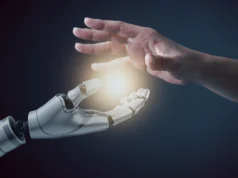Research on the stylistic distinctions between human journalists and artificial intelligence (AI) has revealed that AI-generated news pieces lack the creative flair of human journalists.
Researchers from Charles Darwin University (CDU) aimed to determine the language distinction between news items produced by AI and those written by journalists. The article “Distinguishing Human Journalists from Artificial Storytellers Through Stylistic Fingerprints” was released in the journal Computers’ special issue on Emerging Trends in Machine Learning and Artificial Intelligence.
Researchers gave chatbot Gemini 150 news pieces on subjects like politics, sports, military affairs, and technology, and instructed it to write 150 articles that matched the information in the human-written stories.
The Australian, Sydney Morning Herald, and New York Times were the sources of the human-written stories.
The study’s chief scientist, Van Hieu Tran, a CDU Master of Information Technology graduate, stated that although AI-generated content was getting more complex every day, there were still minor stylistic variations.
The researchers discovered that Gemini journalists lacked grammatical flexibility, whereas human journalists had a wider range of phrase and paragraph lengths.
Additionally, human journalists employ more verbs, indicating that their writing style is more concerned with elucidating actions to keep readers interested. In contrast, Gemini use more nouns than verbs.
According to our work, literature written by AI and human authors is equally readable,” Tran stated.
But the study also reveals that compared to AI, human writers create a wider variety of syntactic and paragraph patterns in their journalism. The’more uninteresting’ content that AI generates lacks writers’ individual flair and stylistic diversity.
“This research is important because it suggests that human ingenuity and deep personality could still thrive and possibly be more appealing to human readers,” emphasizes Dr. Yakub Sebastian, a lecturer in information technology at CDU.
The question of whether it important to differentiate between AI and human writers goes beyond the topic of originality or attribution, particularly if all news reports are equally factual.
“We believe it matters because journalism does more than just present facts; it frequently creates narratives and views. For example, biases in AI are undoubtedly something we should be concerned about.
Given how rapidly AI is developing to resemble human copy, Dr. Sebastian, who oversaw the study and co-authored its publication, said this kind of research is crucial and that the knowledge gleaned from this report may find use in real-world scenarios.
AI models are developing at a dizzying rate, and we see them becoming more and more competent of tasks that humans can perform,” Dr. Sebastian stated.
As a result, it should get harder for human readers to tell the difference between literature produced by AI and that created by humans. This is already taking place. The world’s first artificial intelligence-generated newspapers were just released by an Italian daily.
“We can think of a Turnitin-equivalent Web browser plug-in that could flag with a certain probability that the news being displayed on the Web browser is AI-generated based on the machine learning model we developed in this paper.”







